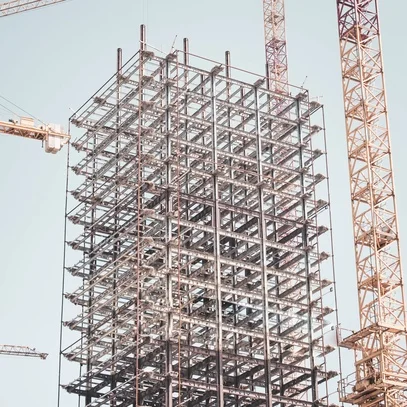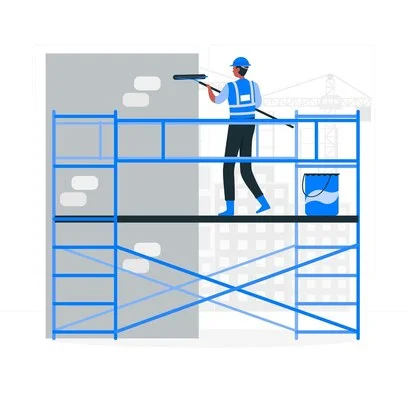As a scaffolding erector, ensuring safety when executing the project is of paramount importance.
This comprehensive guide will equip you with the knowledge and expertise needed to maximise safety as a scaffolding erector. From understanding the regulations to implementing best practices, we will cover all aspects, so you will know what to expect from a truely reliable scaffolding contractor.
If you need scaffolding support for your upcoming project, check out scaffolding erectors in London and other areas available on our engineering marketplace and find your contractor.
1. Conducting Thorough Risk Assessments
Prior to commencing any scaffolding project, a comprehensive risk assessment must be conducted. Identify potential hazards and evaluate the risks associated with the specific job site and project requirements. By doing so, scaffolders implement targeted safety measures to address potential dangers effectively.
2. Adhering to Industry Regulations and Standards
The scaffolding industry is governed by strict regulations and standards to safeguard workers' well-being. Familiarising with the local and national guidelines pertaining to scaffolding erection, dismantling, and usage is a must as the compliance helps to maintain a safe and legally compliant work environment.
3. Providing Proper Training and Certification
To ensure the utmost safety, scaffolding erectors must get relevant training and certification. Proper training equips workers with the necessary skills to erect and dismantle scaffolds correctly, as well as to use safety equipment and tools proficiently.
4. Utilising Personal Protective Equipment (PPE)
Personal protective equipment, including harnesses, helmets, and safety gear, must be worn by all workers on the scaffold. This equipment provides an added layer of protection and can prevent serious injuries in case of a fall or accident.
5. Implementing Fall Prevention Measures
Falls are one of the most common causes of injuries in the construction industry. Implementing fall prevention measures such as guardrails, safety nets, and toe boards can significantly reduce the risk of falls from heights.
6. Anchoring the Scaffolding Properly
Ensure that the scaffolding is adequately anchored to the building or structure. Unstable scaffolds can lead to accidents and injuries. Follow manufacturer guidelines for assembly and anchoring to maintain stability.
7. Regularly Supervising and Monitoring the Worksite
Supervision is essential to enforce safety protocols and ensure that all workers are following established safety procedures. Erectors must monitor the worksite regularly to identify potential safety issues and take corrective actions promptly. With safety audits they can evaluate the effectiveness of safety measures and identify areas for improvement. And use the findings from audits to enhance safety practices.
8. Promoting a Safety Culture
Creating a safety-conscious work culture is essential for maximising safety as a scaffolding erector. Encourage workers to actively participate in safety programs and provide incentives for safe practices.
9. Establishing Emergency Response Plans
In case of an accident or emergency, having a well-defined response plan is crucial. Train workers on emergency procedures and establish clear protocols for handling incidents.
10. Addressing Worker Fatigue
Long hours and physically demanding work can lead to worker fatigue, increasing the risk of accidents. Encourage rest breaks and manage work schedules to minimise fatigue-related incidents.
11. Staying Informed About Industry Innovations
Stay up-to-date with the latest advancements in scaffolding technology and safety equipment. Embracing innovations can enhance safety and efficiency in scaffolding projects.
12. Taking Precautions with Electrical Hazards
If the scaffolding is near power lines or electrical equipment, take extra precautions to prevent electrocution hazards. A raliable erector will maintain safe distances and use non-conductive materials when necessary.
13. Educating Workers About Ergonomics
Many scaffolding companies teach their site operatives about proper body mechanics and ergonomics to prevent musculoskeletal injuries while working on the scaffold.
14. Implementing Environmental Controls
If working in dusty or noisy environments, implement controls to reduce the impact on workers' health and safety.
15. Conducting Post-Incident Analysis
In the unfortunate event of an accident, erectors always conduct a thorough post-incident analysis to understand the cause and implement measures to prevent similar incidents in the future.
Conclusion
Maximising safety as a scaffolding erector requires a proactive approach that encompasses risk assessments, compliance with regulations, proper training, and consistent supervision. By prioritising safety and implementing the best practices, erectors can create a safer work environment for their team. But remember, safety is not just a responsibility—it is a shared commitment that benefits everyone involved in the construction industry.


